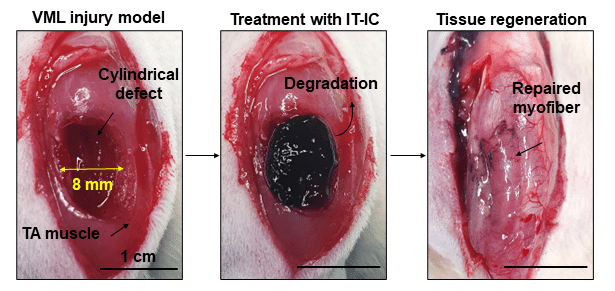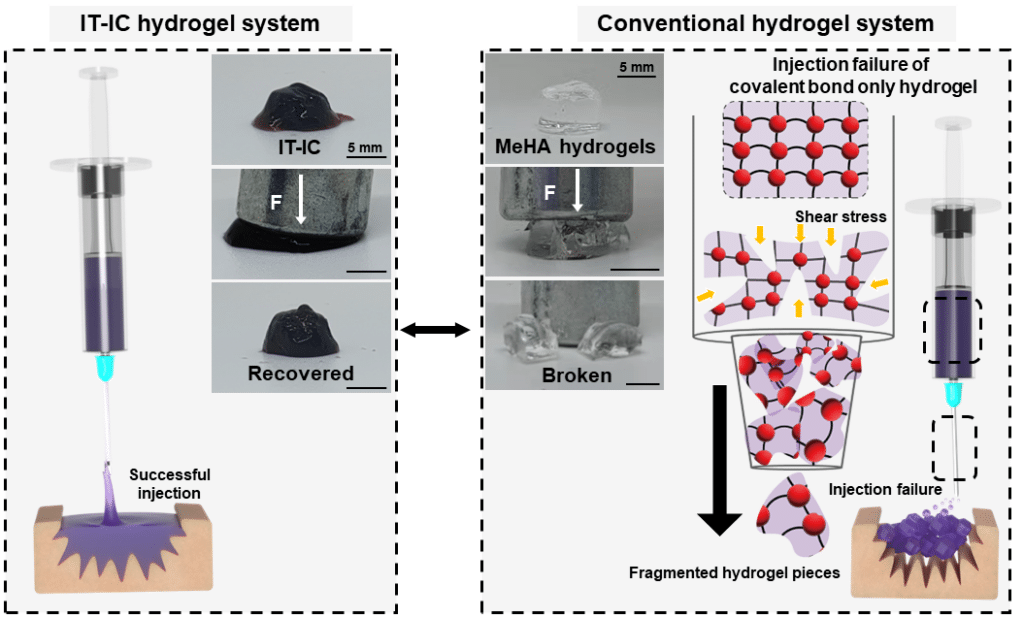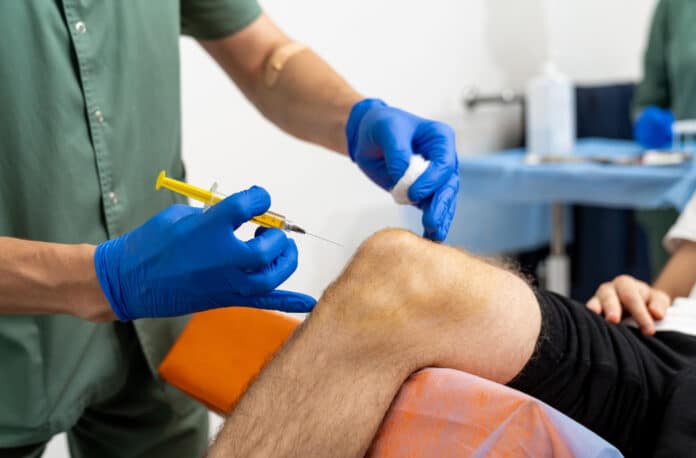In a recent article in Nature, researchers from South Korea’s Institute of Basic Science (IBS) have made significant advancements in medical technology. They’ve come up with a new way to heal muscle injuries. They use something called an “injectable tissue prosthesis,” which is like a special gel that conducts electricity, and they combine it with a robot-assisted rehabilitation system.
Imagine a scenario: Picture yourself swimming in the ocean, and a vast shark bites a big chunk of meat from your thigh. This kind of injury would result in a complete loss of feeling and movement in your leg. If not treated properly, it could lead to permanent disability. How can you recover from such a severe injury?
Traditional methods for rehabilitating muscle injuries have been searching for a better way to help patients regain their movement and feeling after nerve and muscle damage. They wanted a system that combines lightweight exoskeletons and wearable/implantable devices. However, existing materials were too rigid and caused problems like friction and inflammation, slowing the recovery process.
To solve this, researchers from IBS used a material called hyaluronic acid, commonly used for reducing wrinkles. They created an injectable hydrogel for “tissue prostheses” that can temporarily fill the gap left by the damaged muscle or nerves. This material can be injected and is more suitable for hard-to-reach areas, unlike traditional bioelectronic devices that require invasive surgery.
A unique hydrogel was created that acts like body tissue and can be quickly injected into hard-to-reach areas without surgery. This hydrogel has excellent mechanical stability and contains gold nanoparticles, making it conductive. This means it can transmit electrical signals effectively in injured areas. The best part is that it’s biodegradable, so patients don’t need more surgery.
Researchers tested this hydrogel on rodents with muscle injuries. They injected the hydrogel and used stretchable devices for electrical sensing and stimulation. With the help of robots guided by muscle signals, they improved the rodents’ walking without stimulating their nerves. The hydrogel also enhanced muscle tissue regeneration in the long run.

This injectable conductive hydrogel is excellent for recording and stimulating electrical signals, and it has the potential for various applications. It’s a new way to approach bioelectronic devices and can be used as a soft tissue prosthesis for rehabilitation support.

Professor SHIN Mikyung underscored the importance of the study and said, “We’ve crafted an injectable, strong, and electrically conductive soft tissue prosthesis that’s perfect for treating severe muscle injuries needing neuromusculoskeletal rehab. Creating this injectable hydrogel using an innovative cross-linking technique is a significant accomplishment. We believe it can be used not only in muscles and peripheral nerves but also in organs like the brain and heart.“
Professor SON Donghee contributed and said, “Our research has introduced a closed-loop gait rehab system involving a robust injectable hydrogel and flexible self-repairing sensors. This innovation has the potential to greatly improve rehabilitation outcomes for individuals with neurological and musculoskeletal issues. Furthermore, it can be crucial in accurate diagnosis and treatment for different organs within the human body.”
The research group is actively engaged in ongoing investigations to create novel materials for regenerating nerve and muscle tissues that can be implanted with minimal invasiveness. Additionally, they are exploring the possibilities of using the conductive hydrogel to promote recovery in a wide range of tissue injuries, thereby eliminating the necessity for surgical procedures.

This research represents a remarkable leap forward in rehabilitation medicine, biomaterial technology, and bioelectronic devices. Integrating an injectable tissue prosthesis with a closed-loop bioelectronic system holds immense promise for patients with neurological and musculoskeletal challenges, offering improved rehabilitation prospects and the potential for precise diagnosis and treatment in various organ-related medical conditions. The biodegradable Nature of the hydrogel further adds to its appeal as a cutting-edge soft tissue prosthesis for medical applications.
Journal reference:
- Jin, S., Choi, H., Seong, D., et al. Injectable tissue prosthesis for instantaneous closed-loop rehabilitation. Nature. DOI: 10.1038/s41586-023-06628-x.
